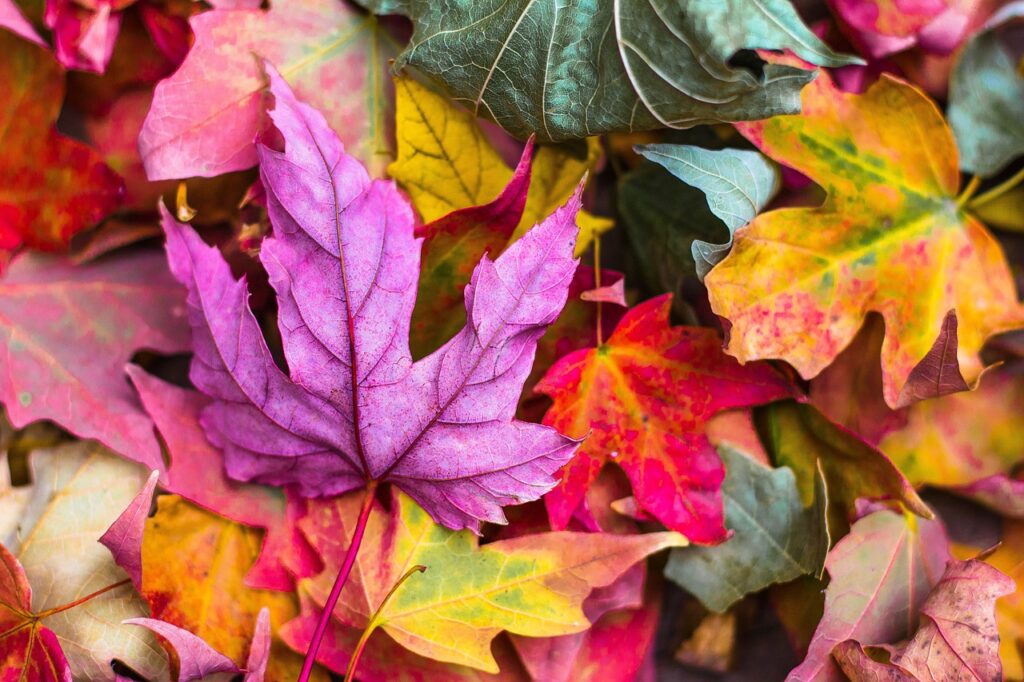Research Background — The Significance of Autumn Color Vibrancy in Our Lives
Japan’s alpine autumn foliage has long captivated visitors from around the world with its brilliant colors. In regions such as the Japanese Alps and the mountains of Hokkaido, the short yet intense arrival of autumn transforms mountain slopes into vivid reds and golds, creating landscapes that hold not only touristic value but also deep cultural and lifestyle significance for local communities. These color changes are more than just fleeting scenery—they serve as a “natural calendar,” reflecting the year’s climatic and environmental conditions. In recent years, however, scientific evidence suggests that the vibrancy of these colors may be gradually diminishing due to global warming and shifts in snowfall patterns. The study introduced here measures autumn leaf color using a quantitative index of “brightness,” combining past observational data with future climate models to forecast what autumn foliage may look like in years to come. This approach makes it possible to visualize the previously anecdotal “fading” of foliage and to quantify the impact of climate change. The implications go beyond aesthetics, touching on tourism, regional economies, alpine spiritual traditions, and cultural events—areas deeply tied to community life. Autumn foliage is, in many ways, a “window” for experiencing the seasons, and changes in its colors may serve as an immediate, tangible signal of climate change.
Methods — A Scientific Approach to Measuring Autumn Color Brightness
The research team installed high-resolution cameras at multiple alpine sites—Asahidake, Murodo, and Gokurakudaira—across Hokkaido and the central Japanese Alps, conducting long-term fixed-point observations during each year’s autumn foliage season. This was not simply photography; it was a systematic collection of time-series data to scientifically track color changes. From the vast number of images collected, they calculated the Visible Atmospherically Resistant Index (VARI) to quantify the “brightness” of autumn colors. VARI closely reflects the human perception of vibrancy while minimizing interference from atmospheric haze and lighting conditions, making it suitable for year-to-year and site-to-site comparisons. This processing ensured fair evaluation across varying conditions such as sunny, cloudy, or foggy days. In addition, the researchers meticulously recorded the dates of snowmelt and the onset of green-up each spring, enabling them to track how these timings have shifted over the years. Integrating these environmental and climatic datasets with meteorological information, they built linear mixed models to quantify the relationship between spring onset and autumn color brightness. While there is a common belief that “early springs shorten autumn,” this study provides data-driven evidence, numerically revealing “how much the spring head start reduces autumn vibrancy.”
Results and Discussion — How Spring Timing Affects Autumn Color
The analysis revealed a clear trend: in years with earlier spring green-up, autumn foliage brightness (VARI) was consistently lower. Leaves that began their season earlier tended to store less pigment by autumn, resulting in less vibrant reds and yellows and more muted tones. This phenomenon may be driven by multiple physiological mechanisms, including shorter leaf lifespans, mismatches in the timing of anthocyanin and carotenoid production, and reduced photosynthetic capacity over summer. Future projections under a high-warming scenario (RCP8.5) estimate that by 2081–2100, autumn color brightness could decline by as much as 25%—a change clearly perceptible to the human eye. In contrast, under a strong mitigation scenario (RCP2.6), brightness loss is projected to remain within a few percent, preserving much of the vibrancy. Regionally, the greatest impacts are expected in areas where current mean annual temperatures exceed 3.5°C, notably in the southern Hokkaido and northern Japanese Alps, with lower-latitude and lower-elevation sites showing more pronounced declines. These findings imply shifts not only in peak viewing times and tourism patterns but also in ecosystem functions such as total alpine photosynthesis and post-leaf-fall nutrient cycling in soils.
Implications for Our Daily Lives
The phenomenon is not limited to alpine regions. Since leaf coloration is influenced by tree species and climate conditions, similar trends could appear in urban street trees, park maples, and other green spaces. In cities, the heat island effect tends to warm winters and bring earlier springs than surrounding rural areas, potentially leading to paler autumn colors and shorter foliage seasons. Observational data from major cities like Tokyo and Osaka already suggest that peak autumn foliage occurs earlier than it did decades ago. For the tourism industry, shortened seasons and reduced vibrancy could diminish the appeal of famous foliage spots, impacting related sectors such as hospitality, dining, and transportation. Beyond tourism, foliage changes have ecological consequences: leaf senescence and fall are critical to forest carbon cycling and soil nutrient dynamics. Earlier leaf drop could alter the timing of organic matter input into soils, affecting microbial activity, nutrient recycling, and even plant growth in subsequent years. Thus, the issue must be viewed as a multi-layered challenge spanning from urban environments to alpine ecosystems.
Plant Hack — How This Knowledge Can Be Used
The projection of reduced autumn color brightness need not be viewed solely as bad news; it also presents opportunities to develop adaptive strategies and creative applications. For example, horticultural practices could be optimized to promote pigment production, or urban greening plans could prioritize tree species and cultivars that retain vibrant colors for longer. Expanding fixed-point monitoring as a citizen science initiative could help communities share foliage data and build early-warning systems for abnormal color changes. Furthermore, these changes could be incorporated into environmental education programs or tourism events, creating region-specific attractions that merge science with culture. Initiatives like localized “foliage calendars” or AI-driven real-time color monitoring could engage both residents and visitors in learning and appreciating seasonal changes. Through such science-society collaborations, we can foster deeper, richer relationships between people and plants.




コメント